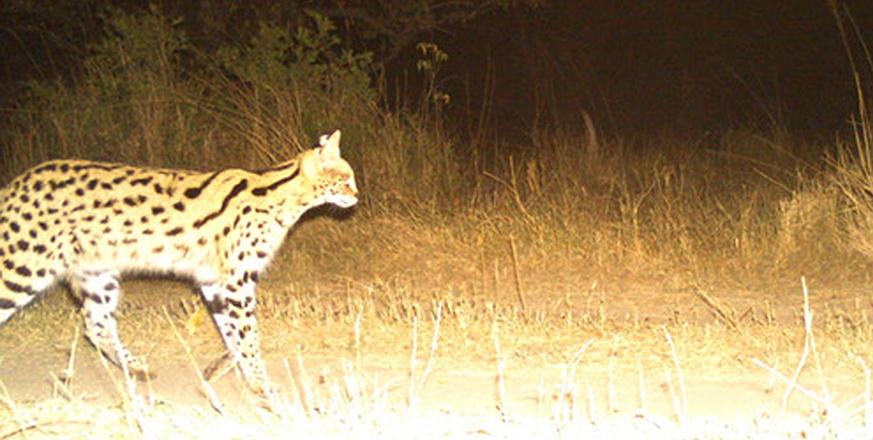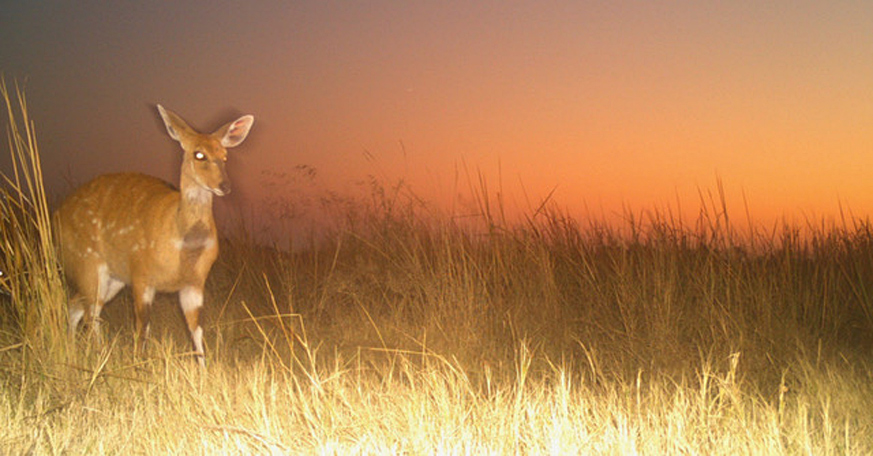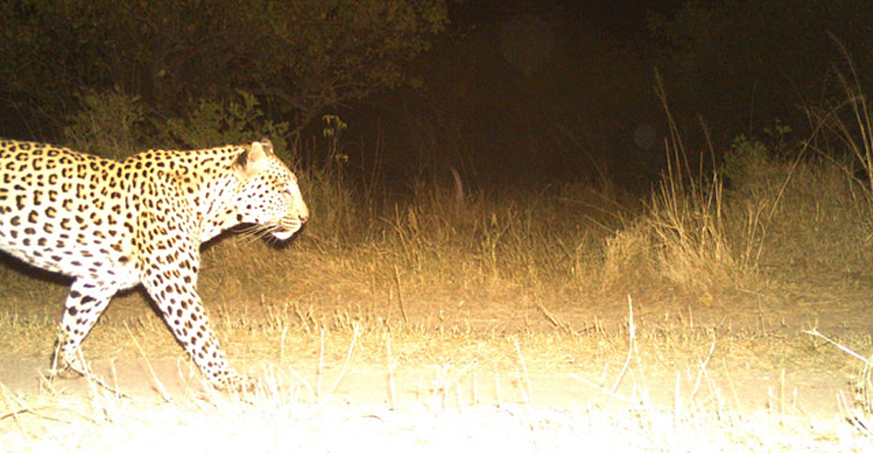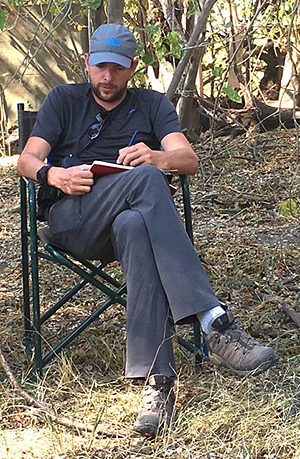Notes from the Field: Kevin Leempoel - Night Life In the Delta

We were all hoping to see large predators, but they are typically active at night, when you don’t want to be out roaming around in these ecosystems. When you do see them during the day—for instance the lions and leopards we observed on occasion—they rarely do anything then other than sleep or otherwise rest up for their night-time hunting forays.

To observe the diversity, distribution and behavior of nocturnal animals, motion activated cameras (or camera traps) can be just the ticket. With these cameras, you get sightings of wildlife without disturbing them, and the collected images provide a great way to engage the public. So, around our camps, we often installed camera traps to see who we were camping with. Setting up the cameras required taking into account that crunching by hyenas and squashing by elephants were real possibilities, even likelihoods. Therefore the cameras were placed inside protective metal boxes and we hoped for the best. Each morning, we retrieved the cameras and all eagerly gathered around the computer to discover the pictures that had been captured.
Finding that leopards, hyenas, serval cats and jackals roamed around our tents got us all excited rather than scared. Knowing that these animals were living alongside us but were only active at night gave a very different feeling about our camp sites, and reminded us why we had better stay in our tents until dawn. We also saw plenty of herbivores on the pictures, but the field-of-view of the cameras we had is narrow so, for elephants, we rarely got more than their trunk.

Because the cameras were equipped with a visible flash, we were able to describe the coat patterns of a leopard and serval cat that were captured on film. These patterns are unique and are often used to estimate the number of individuals within these species in a given area. We used the coat patterns to identify the individuals that we observed both in the cameras and in sightings during the day. We never did see the male leopard shown here in daytime, but we did see the serval cat multiple times.
Camera traps truly give a different perspective on biodiversity. These pictures remind me of the work I do back in Jasper Ridge on mountain lions. At Jasper Ridge, the amount of information we collected about their behavior, territory, progeny etc. cannot be acquired by any other means. I’m looking forward to seeing what the Jasper Ridge mountain lions have been up to while I was away!
 Kevin Leempoel is a postdoctoral scholar in the Hadly Lab
Kevin Leempoel is a postdoctoral scholar in the Hadly Lab



